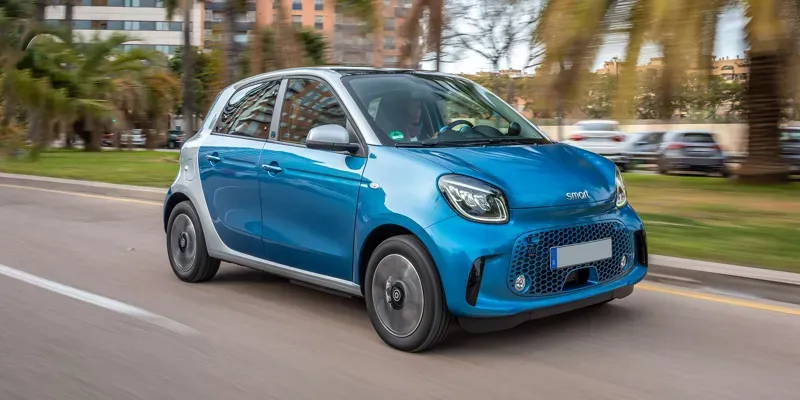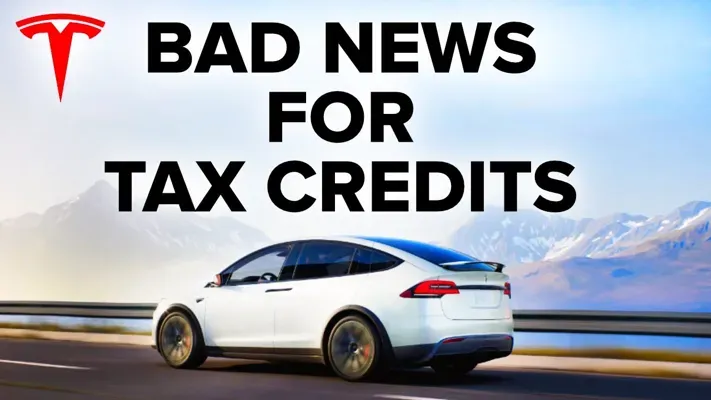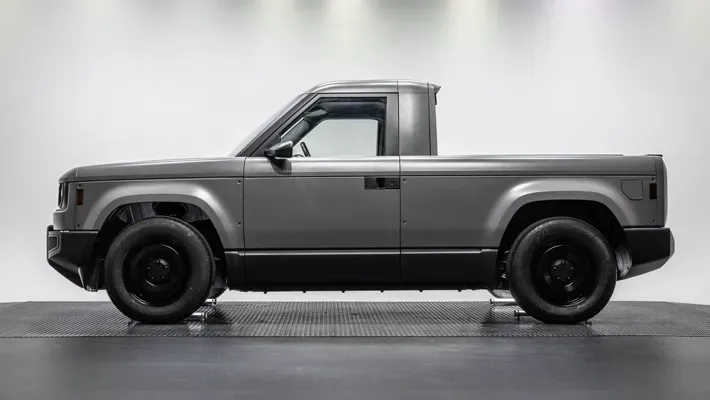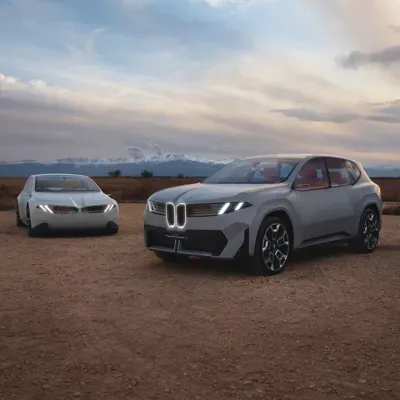Affordable electric vehicles are revolutionizing the automotive landscape, offering eco-friendly alternatives without breaking the bank. Volkswagen’s upcoming lineup, featuring models such as the ID. Polo and ID. Cross, aims to compete with Chinese competitors by leveraging cutting-edge solutions like lithium iron phosphate (LFP) batteries. These innovative power sources are known for their cost-effectiveness and longevity, making them a smart choice for budget-conscious consumers. Equipped with advanced electric motor technology and a silicon carbide inverter, these EVs promise improved efficiency and reduced energy loss. With a starting price below $29,000, Volkswagen’s commitment to affordability in its electric vehicle offerings is set to redefine the market and attract a wider audience.
The shift towards budget-friendly electric mobility options is gaining momentum, with manufacturers like Volkswagen leading the charge. Fresh advancements in battery technology, particularly LFP cells, combined with performance enhancements such as new electric drive units, ensure that small electric vehicles remain financially accessible. Models like the ID. Polo and ID. Cross represent a significant leap in the affordable electric car segment, propelling eco-friendly driving into the mainstream. By prioritizing cost reduction while incorporating efficient components like silicon carbide inverters, Volkswagen not only meets consumer demand but also strengthens its competitive edge in the evolving EV marketplace. As these trends unfold, the future of transportation looks promisingly green and economical.
The Rise of Affordable Electric Vehicles
As the automotive industry transitions toward sustainable solutions, affordable electric vehicles (EVs) have emerged as a significant contender in the market. Companies like Volkswagen are investing heavily in producing budget-friendly EVs to meet the increasing demand while maintaining competitive pricing. The company’s upcoming models, such as the ID. Polo and ID. Cross, are expected to have starting prices below $29,000, making electric mobility accessible to a broader audience. This shift not only enhances the global EV landscape but also promotes environmental sustainability within an economically feasible framework.
Integrating advanced technologies will play a pivotal role in the performance and attractiveness of these affordable EVs. Volkswagen’s innovative approach includes the utilization of lithium iron phosphate (LFP) batteries known for their cost-effectiveness and durability. By prioritizing affordability and efficiency, automakers can entice consumers who may have previously found electric vehicles too pricey. With the introduction of cutting-edge electric motor technology and silicon carbide inverters, Volkswagen is set to redefine entry-level EV standards.
Innovative Technology in Volkswagen’s Future EVs
Volkswagen is leveraging advanced technologies such as new battery chemistries and electric motor advancements to enhance the efficiency and performance of its electric vehicles. The introduction of the APP290 electric drive unit, shared during the IAA Mobility show, is a testament to Volkswagen’s commitment to innovation. This drive unit will power various models across its brands, including Skoda and Cupra, ensuring that even entry-level models maintain high performance and efficiency.
Additionally, the permanent-magnet drive unit designed by Volkswagen will significantly boost torque and horsepower, making compact models competitive with larger vehicles. The incorporation of silicon carbide technology in their inverters will further enhance energy efficiency by minimizing power losses, a crucial factor for maximizing the range of affordable EVs. As consumers become more discerning about vehicle performance and cost-effectiveness, these technological advancements will be essential in establishing Volkswagen’s presence in the affordable electric vehicle market.
Volkswagen’s Battery Strategy for Affordable EVs
A critical aspect of Volkswagen’s strategy for affordable electric vehicles revolves around its battery technology. The company is transitioning to a unified cell design, which optimizes manufacturing processes and reduces production costs. By employing lithium iron phosphate (LFP) batteries in their smaller models, Volkswagen aims not just for cost efficiency but also for enhanced battery longevity, which is crucial for consumer confidence in electric vehicle ownership.
The decision to provide two battery options—the smaller LFP packs and a larger nickel manganese cobalt (NMC) chemistry battery—ensures that a wide range of consumers can find an option that meets their needs. While the LFP battery offers around 186 miles of range, the NMC variant is projected to deliver approximately 280 miles, appealing to diverse driving habits. This clear focus on battery performance and affordability positions Volkswagen as a forerunner in the growing EV market.
Competing with Chinese Electric Vehicle Manufacturers
As Volkswagen gears up to launch its affordable electric vehicles, it faces stiff competition from established Chinese automakers. Companies like BYD and NIO have already made significant inroads into the global market with their competitive pricing and advanced EV technologies. To effectively compete, Volkswagen must leverage its reputable engineering and innovation to convince consumers of the value and reliability that come with its affordable EV offerings.
By prioritizing local production methods and enhancing technology like LFP batteries and silicon carbide inverters, Volkswagen can establish a strong market presence. Their strategic focus on creating economically viable models such as the ID. Polo and ID. Cross will help attract consumers seeking alternatives to higher-priced electric models. Maintaining innovative features while ensuring affordability positions Volkswagen to challenge the influx of Chinese EVs, fostering a healthy competitive environment.
The Future of Volkswagen’s Electric Motor Technology
Volkswagen’s developments in electric motor technology signal a strong commitment to the future of sustainable transportation. With the development of a permanent-magnet drive unit capable of delivering up to 214 horsepower, Volkswagen showcases its ability to produce compact yet powerful vehicles. This technology not only supports a better driving experience but also enhances overall efficiency, an essential factor in the electric vehicle market.
Additionally, by incorporating elements like the silicon carbide inverter, Volkswagen is poised to reduce energy losses, favoring consumers looking for an efficient and reliable electric vehicle. The motor’s design reflects a shift in focus, emphasizing performance without compromising the ethical considerations of environmental sustainability. As new advancements unfold, Volkswagen is well-positioned to lead the charge in electric motor innovation.
Benefits of LFP Batteries in Volkswagen EVs
Lithium iron phosphate (LFP) batteries are at the forefront of Volkswagen’s strategy in launching affordable electric vehicles. Known for their long lifespans and thermal stability, LFP batteries provide a compelling option for budget-conscious consumers. These batteries do not require expensive materials like cobalt, allowing Volkswagen to keep the costs down without sacrificing quality or safety.
Moreover, the uniformity and simplicity in battery design will aid in reducing production complexities, enabling Volkswagen to scale up its production effectively. As consumers increasingly show interest in reliable and safe alternatives to traditional combustion engines, the LFP battery will likely play a key role in the acceptance of affordable EVs, thus solidifying Volkswagen’s position in the EV marketplace.
Fast Charging Capabilities of New Volkswagen EVs
With the rollout of its affordable electric vehicles, Volkswagen emphasizes fast charging technology as a key feature for consumer convenience. The ability to charge from 10% to 80% in under 25 minutes will cater to the needs of busy consumers, allowing for a quick energy boost during travel. This efficiency is particularly relevant for smaller vehicles like the ID. Polo, targeting urban drivers who may not have the luxury of lengthy charging times.
By implementing advanced battery management systems and supporting rapid charging, Volkswagen is setting new standards for electric mobility. Fast charging capabilities will alleviate range anxiety and foster an increased sense of confidence in potential EV buyers. As manufacturers continue to enhance charging infrastructure, Volkswagen’s focus on fast-charging technology ensures its EVs remain competitive in an increasingly crowded market.
Local Production Strategies for Volkswagen’s EVs
As environmental considerations and local manufacturing gain prominence in the automotive sector, Volkswagen is strategically focusing on local production for its affordable electric vehicles. This approach not only reduces the carbon footprint associated with transporting vehicles but also aligns with the growing consumer preference for sustainability. By housing production facilities within Europe, Volkswagen can assure customers that they are investing in environmentally responsible manufactured goods.
Volkswagen’s integrated strategy across its different brands—such as Skoda and Cupra—promotes resource sharing and optimizes production efficiency. This collaborative model allows for a more reliable supply chain, ensuring consistent availability of advanced components like LFP batteries and electric drive units. Such localized efforts signify Volkswagen’s commitment to supporting both the economy and sustainable practices while delivering cutting-edge electric vehicles.
Implications for American Consumers in Electric Vehicle Market
While many of Volkswagen’s upcoming affordable electric vehicles, like the ID. Polo and ID. Cross, are targeting European markets, American consumers may also see the influence of this innovative product line. Although smaller models may not make their debut in the U.S. market, the technological advancements within these vehicles could eventually pave the way for future models that cater to American preferences for electric vehicles.
In particular, advancements in battery efficiency, electric motor technology, and fast charging can set industry benchmarks that appeal to American audiences. Consumer interests in sustainable transportation continue to grow, making it imperative for manufacturers like Volkswagen to adapt their offerings accordingly. As technology evolves, it’s crucial for companies to have scalable innovations ready to meet the diverse needs of consumers in different regions.
Frequently Asked Questions
What are the advantages of Volkswagen’s affordable electric vehicles with LFP batteries?
Volkswagen’s affordable electric vehicles (EVs) leverage lithium iron phosphate (LFP) batteries, known for their cost-effectiveness and durability. This technology minimizes production costs, allowing VW to offer competitive pricing on models such as the ID. Polo and ID. Cross while ensuring long battery life and safety, making them an attractive option for budget-conscious consumers.
How does the silicon carbide inverter enhance Volkswagen’s affordable EVs?
The silicon carbide (SiC) inverter utilized in Volkswagen’s affordable electric vehicles significantly improves energy efficiency. By reducing energy losses during conversion, the SiC inverter allows VW’s ID. Polo and ID. Cross to achieve better performance and range, while optimizing overall power management and lowering running costs for drivers.
What is the expected range of Volkswagen’s small affordable electric vehicles like ID. Polo?
Volkswagen’s upcoming affordable electric vehicles, including the ID. Polo, are expected to offer varying ranges based on battery choice. The smaller LFP battery is projected to provide around 186 miles (300 kilometers) of range, while the larger nickel manganese cobalt (NMC) battery will allow for approximately 280 miles (450 kilometers), catering to different consumer needs.
What technology advancements will Volkswagen implement in the ID. Cross and ID. Polo electric vehicles?
Volkswagen’s ID. Cross and ID. Polo will feature significant technological advancements such as new LFP batteries for cost efficiency, silicon carbide inverters for enhanced energy performance, and a newly designed electric motor that delivers around 214 horsepower. These innovations aim to improve the driving experience and market competitiveness of VW’s affordable EV lineup.
When can we expect Volkswagen’s affordable electric vehicles to hit the market?
Volkswagen’s affordable electric vehicles, including the ID. Polo and ID. Cross, are anticipated to launch soon, with starting prices under $29,000 (€25,000) in Europe. As VW continues its push towards an electric future, expect these models to be available for purchase in the near future, competing actively against other brands in the EV market.
Will Volkswagen’s affordable electric vehicles have advanced electric motor technology?
Yes, Volkswagen’s affordable electric vehicles will feature advanced electric motor technology. The new permanent-magnet drive unit is capable of producing around 214 horsepower and 290 Newton-meters of torque, ensuring efficient and powerful performance in models like the ID. Polo and ID. Cross, fulfilling consumers’ expectations for compact EVs.
How does Volkswagen plan to minimize costs for their affordable electric vehicles?
To minimize costs for their affordable electric vehicles, Volkswagen is utilizing LFP batteries known for their low manufacturing expenses and durability. Additionally, VW plans to implement a ‘unified cell’ battery approach to streamline production and leverage new technologies that enhance vehicle efficiency and reduce development costs, making EVs more accessible to a wider audience.
Are Volkswagen’s new EVs designed with user-friendly technology features?
Volkswagen is committed to reintroducing user-friendly technology features in their upcoming affordable EVs. Following customer feedback, models like the ID. Polo and ID. Cross are expected to move away from frustrating touch sliders, reinstating physical buttons for controls, which improves usability and enhances the overall driving experience.
| Key Features | Details |
|---|---|
| Affordable Pricing | Starting prices below $29,000 (€25,000) in Europe. |
| Battery Technology | Utilizing lithium iron phosphate (LFP) batteries for low cost and durability. |
| Performance | New electric drive unit (APP290) producing approx. 214 hp and 290 Nm of torque. |
| Charging Efficiency | Fast charging capabilities from 10% to 80% in under 25 minutes. |
| Range | LFP battery: ~186 miles (300 km), NMC battery: ~280 miles (450 km). |
| Future Plans | Focus on reintroducing physical buttons in upcoming models, moving away from touch sliders. |
Summary
Affordable electric vehicles are set to gain significant attention with Volkswagen’s new line of EVs that aim to compete against Chinese brands. Featuring advanced tech like lithium iron phosphate batteries and efficient electric motors, these vehicles promise durability and affordability. With the anticipated launch of models such as the ID. Polo and ID. Cross at accessible price points, Volkswagen is positioning itself as a strong contender in the affordable EV market. As the company enhances its offerings, consumers can look forward to improvements in battery technology, performance, and user-friendly interfaces, contributing to the overall appeal and accessibility of electric vehicles.



























